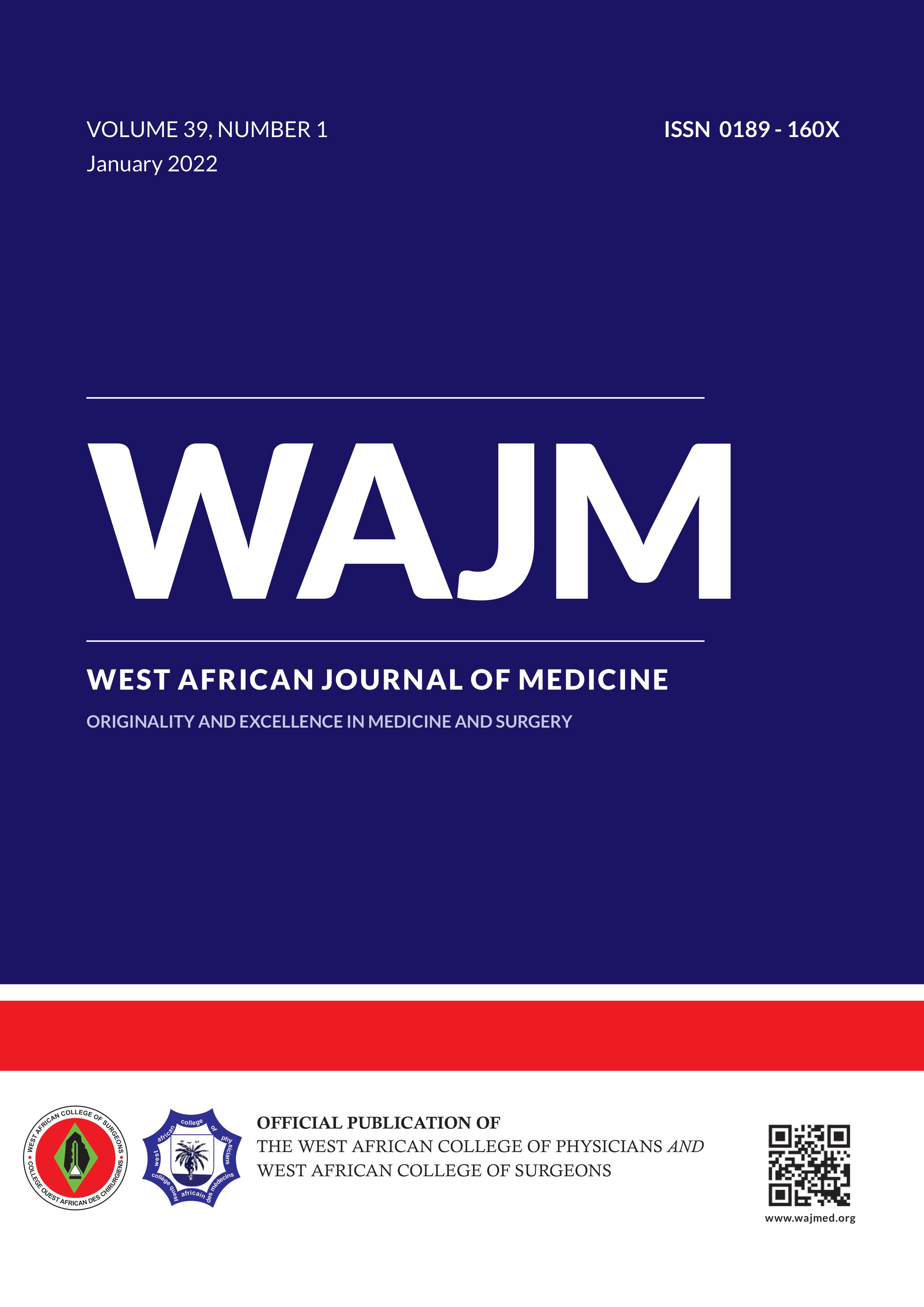ORIGINAL: Evaluation of Asymptomatic Malaria Antigenaemia and Parasitaemia in Human Immunodeficiency Virus-Infected Children in Benin City, Nigeria
West Afr J Med. 2022 January; 39(1): 45-51
Keywords:
Antigenaemia; Benin City; HIV infected children; Malaria; Parasitaemia.Abstract
Background: Malaria and HIV/AIDS are rampant in subSaharan Africa with prevalence of one reinforcing the other and control of one impactful on control of the other. Malaria parasitaemia (MP) prevalence is increased in HIV-infected individuals while certain drugs used in latter cause decline in MP but it is uncertain how they affect malaria antigenaemia (MA). How certain bio-social and disease characteristics affect MA and MP in this cohort is unknown.
Objectives: To determine prevalence of asymptomatic MP and MA and their clinical and social determinants in HIV infected.
Methods: In a prospective cross-sectional study carried out at the University of Benin Teaching Hospital (April to June 2016), 221 HIV-infected children (aged 1-17years) asymptomatic for malaria and 221 apparently healthy HIV-negative controls were studied. MA was assessed using rapid diagnostic test while MP was evaluated using microscopy. Standard method was used to determine parasite count.
Results: Prevalence of asymptomatic MP was 24.4% in subjects and 17.6% in controls while MA prevalence in subjects and controls were comparable (20.8% vs 18.1%). Malaria parasitaemia rate (MPr) of 24.4% was higher than malaria antigenaemia rate (MAr) (20.8%). MP and MA rates were independent of socioeconomic status, access to anti-retroviral drugs, their duration of use and clinical disease stage.
Conclusion: MA occurred frequently enough to warrant its use as malaria case definition surrogate in asymptomatic children with HIV/AIDS receiving trimethoprim-sulfamethoxazole prophylaxis and protease inhibitors.
Authors M O Ibadin 1, N Eghafona 2

